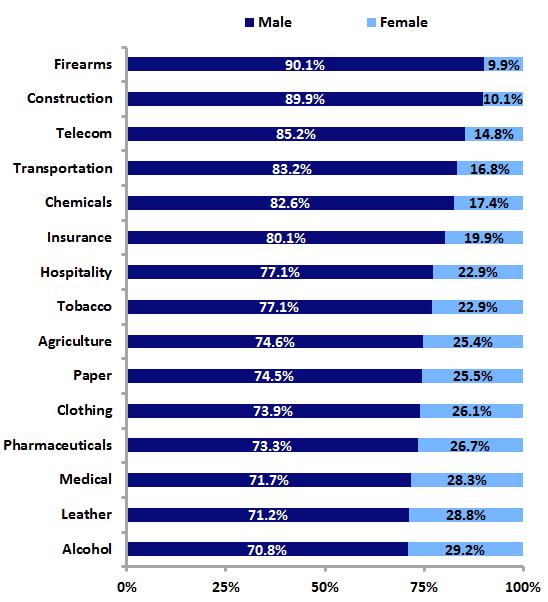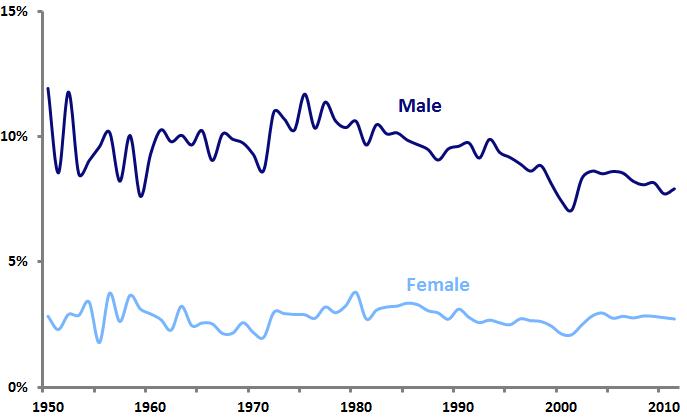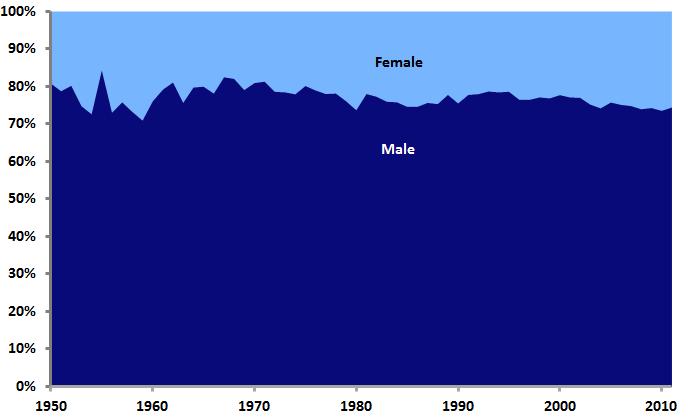When it comes to logos, it’s still a man’s world. Since 2000, male figures in US logos have outnumbered female figures by 3 to 1. A look back at logo design trends over the past 60 years shows that this is not a new state of affairs.
Percentage of new logos featuring male and female design elements
As the graph above shows, there has not been much change in the relative percentage of logos featuring males and females since 1950. Perhaps most notable here is the slight overall decline in male logos, which may be the result of the contemporary trend of designers using what Michael Bierut calls “neutered sprites” to represent people in general, when in the past they might have gone with more graphically elaborate male figures. (Gender-neutral figures such as Bierut’s sprites are not included in this analysis.)
Percentage of new “gendered” logos featuring male or female design elements
We see above that this ratio of male to female logos has not changed much over the years; again, it appears that 3 out of 4 new logos that have some gendered element are male as opposed to female, with a slight decline in that ratio over time that may be attributable to the “sprite effect” discussed above.
Percentage of “gendered” logos featuring male or female design elements, by industry
 Across all years, 76 percent of gendered logos feature male design elements, while 24 percent contain females. There is variation from these averages across industries, however. Logos from industrial categories such as firearms, construction, and telecommunications are more likely to include male figures, while among logos related to clothing, pharmaceuticals, and alcohol, there is a more pronounced tendency toward featuring females.
Across all years, 76 percent of gendered logos feature male design elements, while 24 percent contain females. There is variation from these averages across industries, however. Logos from industrial categories such as firearms, construction, and telecommunications are more likely to include male figures, while among logos related to clothing, pharmaceuticals, and alcohol, there is a more pronounced tendency toward featuring females.
Will the gender gap in logos ever be closed? There certainly do not seem to be a lot more women appearing in logos. Designers seeking to avoid giving off an impression of sexism seem more likely to use a genderless figure, rather than a female one, to represent a generic person. If women are to catch up to men in logos, it will probably be due to more male figures being replaced by “neutered sprites,” not to any increase in the use of female design elements.



